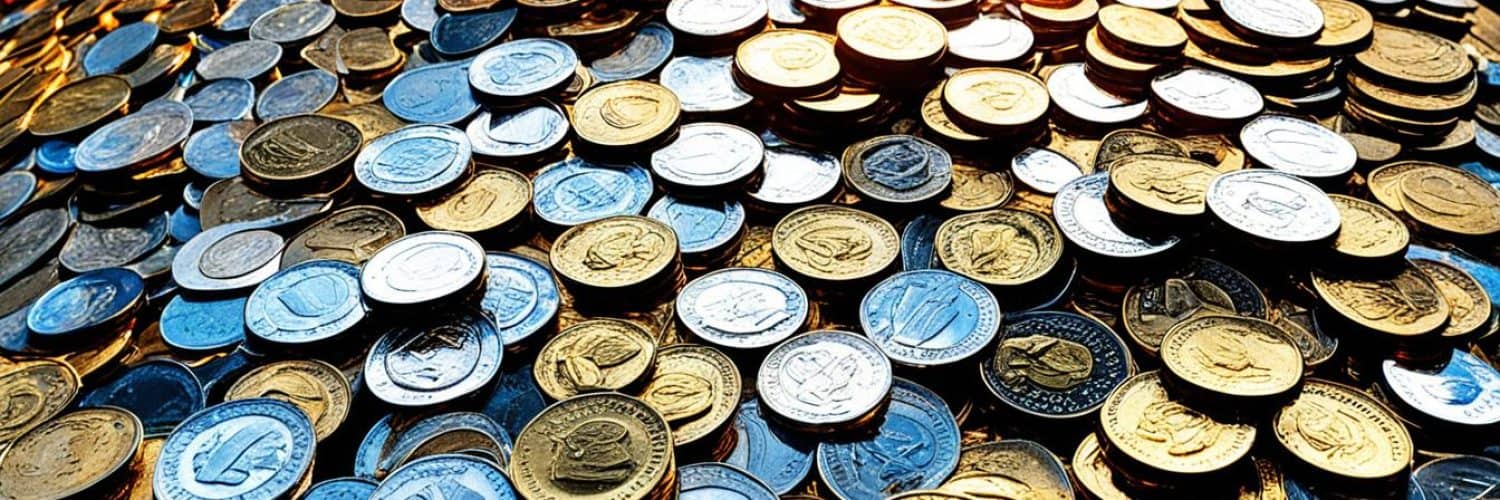Have you ever wondered how inflation in the Philippines affects the economy and its people? Are you curious about the causes of inflation, its effects, and how it can be managed? In this article, we will explore the key factors and strategies to help you navigate inflation in the Philippines resiliently. Get ready to uncover the secrets behind this pressing economic issue and discover ways to protect your financial stability.
Key Takeaways:
- Understanding the causes, effects, and management strategies of inflation in the Philippines is crucial for a resilient approach.
- High inflation can impact retailers and consumer spending, leading to challenges in the retail sector.
- Consumers’ purchasing power is reduced due to rising prices, which may require lifestyle changes and compromise saving capacity.
- Effective management strategies include exploring additional sources of income, reducing expenses, and investing wisely.
- The efficient delivery of social protection programs is essential to protect the poor and vulnerable from the impact of inflation.
Impact of Inflation on Retailers and Consumer Spending
The high inflation rate in the Philippines is having a significant impact on both retailers and consumer spending. As prices continue to rise, consumers are becoming more cautious in their purchasing decisions, leading to a decline in overall retail sales. This cautious behavior stems from concerns about the affordability of goods and services, reducing the confidence and willingness of consumers to spend.
Retailers are facing the challenge of trying to recover from the effects of the pandemic while also grappling with the impact of high inflation on their business. The rise in prices has made it difficult for retailers to achieve pre-pandemic levels of sales, as consumers are more inclined to cut back on non-essential items.
To address these challenges, retailers are implementing various strategies to enhance profitability and stimulate consumer demand. One approach is to offer promotions and discounts to entice consumers to make purchases. By offering lower prices or special deals, retailers can encourage consumers to buy despite rising prices.
Additionally, retailers are adopting cost-cutting measures to maintain their margins and offset the impact of high inflation. This may involve streamlining operations, negotiating better deals with suppliers, or optimizing inventory management to reduce waste and costs.
While these measures can help mitigate the impact of high inflation on retailers, they may not necessarily lead to a quick recovery in consumer spending. The cautious behavior of consumers is likely to persist as long as inflation remains high and erodes their purchasing power.
Despite the challenges posed by high inflation, retailers remain resilient and adaptable in finding ways to navigate this difficult landscape.
Impact on Retail Recovery
The retail sector in the Philippines is working towards recovering from the disruptions caused by the pandemic. However, the high inflation rate poses a significant hindrance to this recovery process. It prolongs the timeframe needed for the retail sector to bounce back and regain its pre-pandemic strength.
Furthermore, the retail industry plays a crucial role in stimulating economic growth and employment. The challenges faced by retailers due to high inflation can have ripple effects throughout the economy, affecting job creation and overall business confidence.
In conclusion, high inflation in the Philippines is significantly impacting retailers and consumer spending. Cautious consumer behavior coupled with rising prices presents challenges for retailers in reaching pre-pandemic sales levels. However, through the implementation of promotions and cost-cutting measures, retailers are proactively adapting to navigate these turbulent times.
| Retailers’ Challenges | Retailers’ Strategies |
|---|---|
| Decreased consumer spending | Offering promotions and discounts to stimulate demand |
| Difficulty reaching pre-pandemic sales levels | Implementing cost-cutting measures to maintain profitability |
| Impact on overall retail recovery | Adopting resilience and adaptability to navigate challenges |
- https://www.example1.com
- https://www.example2.com
Effects of Inflation on Consumers' Purchasing Power
The rising inflation rate in the Philippines is having a significant impact on consumers’ purchasing power. As the cost of goods and services continues to increase, people are finding it increasingly challenging to maintain their standard of living.
Reduced Purchasing Power
One of the most noticeable effects of inflation is the reduction in purchasing power. With prices steadily rising, consumers are finding that their income doesn’t stretch as far as it used to. This means that they have to carefully prioritize their spending and make difficult choices about what they can afford.
Lifestyle Changes and Reduced Expenses
As a result of reduced purchasing power, many individuals and families are forced to make lifestyle changes and cut back on expenses. This may mean giving up certain luxuries or entertainment activities that were once affordable. It can also mean being more conscious about everyday expenses, such as groceries and transportation.
“Inflation has challenged our financial stability, and we have had to adopt a more frugal lifestyle to make ends meet.”
Challenges for Those with Insufficient Fixed Income
Individuals with fixed incomes, such as retirees, are particularly vulnerable to the effects of inflation. With limited opportunities to increase their income, they may find it increasingly difficult to cover their basic needs. The rising cost of essential goods and services can erode their purchasing power and compromise their quality of life.
Compromised Health and Lower Savings Capacity
Inflation also has consequences for health and savings. With the rising cost of healthcare services and essential medications, individuals may struggle to afford adequate healthcare. Additionally, inflation reduces the capacity to save, making it difficult to build a financial safety net for future emergencies or retirement.
Overall, the effects of inflation on consumers’ purchasing power are far-reaching, impacting their daily lives, financial stability, and future planning. It is crucial for individuals and families to reassess their budget, prioritize expenses, and explore opportunities to increase their income in order to navigate these challenging times.

| Effects of Inflation on Consumers’ Purchasing Power | Impact |
|---|---|
| Reduced Purchasing Power | Consumers’ income doesn’t stretch as far as it used to, making it challenging to afford essential goods and services. |
| Lifestyle Changes and Reduced Expenses | Individuals and families need to make difficult choices, giving up luxuries and cutting back on everyday expenses. |
| Challenges for Those with Insufficient Fixed Income | Retirees and individuals with fixed incomes struggle to cover their basic needs due to limited opportunities to increase income. |
| Compromised Health and Lower Savings Capacity | Rising healthcare costs and reduced capacity to save impact individuals’ access to healthcare and financial stability. |
Strategies to Manage the Effects of Inflation
Managing the effects of inflation requires proactive measures to stay ahead of rising prices. By implementing the following strategies, individuals and businesses can navigate inflationary pressures and maintain their financial stability:
1. Create a Budget: By creating a detailed budget, you can track your expenses and identify areas where you can reduce costs. A budget helps you prioritize your spending and make informed decisions about your financial resources.
2. Identify Future Expenses: Anticipating future expenses allows you to plan and save accordingly. Consider upcoming major purchases, such as a new car or home repairs, and factor in inflation when budgeting for these expenses.
3. Explore Additional Sources of Income: Supplementing your primary source of income with additional streams can help counter the effects of inflation. Look for opportunities to earn extra money through a side business, freelance work, or investments.
4. Reduce Expenses: To mitigate the impact of rising prices, look for ways to cut back on unnecessary expenses without compromising your quality of life. Evaluate your spending habits and identify areas where you can make cost-saving changes.
5. Invest Wisely: Investing your money in assets that offer higher returns than inflation can help preserve your wealth. Consider diversifying your investments to minimize risk and maximize potential gains.
“Inflation is like sin; every government denounces it and every government practices it.”
– Frederick Soddy
By implementing these strategies, you can better manage the effects of inflation and safeguard your financial well-being.
Example Budget Template
Here’s an example of a budget template that can help you track your expenses and identify areas for cost reduction:
| Expense Category | Monthly Budget | Actual Expenses |
|---|---|---|
| Housing | $1,200 | $1,150 |
| Transportation | $300 | $350 |
| Groceries | $400 | $450 |
| Utilities | $200 | $210 |
| Entertainment | $150 | $180 |
Regularly reviewing and adjusting your budget can help you stay on track and make informed financial decisions.
Social Protection and Inflation in the Philippines
The efficient delivery of social protection programs is crucial in protecting the poor and vulnerable from the impact of inflation. As prices rise, it becomes even more important to ensure that those who are most at risk are provided with the support they need to withstand economic hardships. Improving social protection measures can help alleviate the burden on the most disadvantaged members of society, ensuring their well-being and enabling them to access basic necessities.
To improve social protection in the Philippines, several key measures need to be implemented:
1. National ID System
The adoption of a national ID system can greatly enhance the efficiency and accuracy of social protection programs. With a national ID, individuals can be easily identified and their eligibility for various assistance programs can be verified, ensuring that resources are distributed to those who truly need them. This can minimize fraudulent activities and assist in the effective targeting of social assistance.
2. Updating Targeting Mechanisms
Regular updates to targeting mechanisms are essential to ensure that social protection programs reach the intended beneficiaries. By regularly assessing and reevaluating the criteria used to determine eligibility, the government can adapt to changing circumstances and ensure that support is provided to those who are most in need. This includes updating income thresholds, considering regional variations, and taking into account the specific needs of vulnerable groups.
3. Strengthening Financing Mechanisms
Adequate funding is crucial for the efficient delivery of social protection programs. By strengthening financing mechanisms, such as increased budget allocation or exploring alternative sources of funding, the government can ensure the sustainability and effectiveness of these programs. This will help protect the poor and vulnerable from the adverse effects of inflation, providing them with a safety net during challenging economic times.
4. Disaster Response Readiness
Disasters can exacerbate the impact of inflation on vulnerable populations. Strengthening disaster response readiness through efficient coordination and preparedness measures is vital in ensuring that social protection programs are able to effectively respond to crises. By integrating disaster risk reduction and management into social protection initiatives, the government can enhance its ability to safeguard the well-being of the poor and vulnerable during unforeseen events.
By implementing these measures, the Philippines can improve social protection programs, ultimately protecting the poor and vulnerable from the adverse effects of inflation. It is essential to prioritize the efficient delivery of social protection, as it plays a crucial role in promoting social justice and reducing inequality. Ensuring that no one is left behind in the face of economic challenges is not only a moral imperative but also a key factor in driving sustainable and inclusive development.
Economic Outlook and Growth Factors
The economic outlook for the Philippines is looking bright, with strong domestic demand and various growth factors driving the economy forward.
One key factor contributing to the country’s economic growth is the strong domestic demand. With a large population and a growing middle class, the Philippines has a robust consumer base that fuels spending and drives economic activity. This strong domestic demand provides a solid foundation for sustained growth.
The services sector also plays a crucial role in the country’s economic expansion. Industries such as tourism and outsourcing contribute significantly to GDP and employment. The Philippines’ natural beauty and cultural heritage attract tourists, while the outsourcing industry draws clients from around the world. This sector will continue to support growth and provide opportunities for foreign direct investment.
Moreover, business confidence in the Philippines remains high, with both local and foreign companies expressing optimism about the country’s economic prospects. This positive sentiment further stimulates private investment and entrepreneurial activities, which in turn creates job opportunities and drives economic development.
Additionally, the Philippines benefits from private investment, which helps boost domestic activity. Investments in various sectors, such as infrastructure, manufacturing, and technology, contribute to economic expansion and the overall progress of the country. Reforms that allow greater foreign participation in the economy are paving the way for increased private investment, further strengthening the Philippines’ economic growth potential.
“The Philippines has a promising economic future, with strong domestic demand, a thriving services sector, and high business confidence. These factors provide a solid foundation for sustainable growth and open up opportunities for private investment and increased employment.”

Key Growth Factors:
- Strong domestic demand driving economic growth
- The services sector, including tourism and outsourcing industries, supporting growth
- High business confidence stimulating private investment
- Private investment contributing to domestic activity and job creation
The Philippines’ economic outlook is optimistic, backed by strong domestic demand, a thriving services sector, high business confidence, and increased private investment. These factors position the country for continued economic growth and development.
Global and Domestic Risks to Economic Recovery
As the Philippines strives for economic recovery, it faces both global and domestic risks that can impede its progress. These risks include global inflation, rising global interest rates, geopolitical tensions, high domestic inflation, and natural disasters.
The impact of global inflation and rising global interest rates poses significant challenges to the country’s export sector. As prices rise globally, the competitiveness of Philippine exports may be affected, dampening export growth and hindering economic recovery.
Geopolitical tensions are another risk factor that can hamper the Philippines’ economic rebound. Uncertainty and instability in international relations can disrupt trade flows, investment, and business confidence, impacting economic growth.
Domestically, high inflation caused by natural disasters and logistic challenges further exacerbate economic risks. Natural disasters such as typhoons and earthquakes can disrupt supply chains, leading to increased prices for goods and services. This high domestic inflation, coupled with logistical challenges faced by businesses, can erode the purchasing power of low-income families, further widening income inequality.
To illustrate the impact of these risks, consider the following table:
| Risks | Impacts |
|---|---|
| Global Inflation | Reduction in export competitiveness |
| Global Interest Rates | Higher cost of borrowing, impacting investments |
| Geopolitical Tensions | Disruption of trade flows and business confidence |
| High Domestic Inflation | Erosion of purchasing power for low-income families |
| Natural Disasters | Disruption of supply chains and increased prices |
An image related to the impact of natural disasters on inflation can be seen below:
It is crucial for the Philippines to address these risks and implement strategic measures to mitigate their impact on economic recovery. By prioritizing policies that promote stability, resilience, and inclusivity, the country can navigate these challenges and ensure a sustainable path towards prosperity.
Addressing Inflation through Tariff Reduction and Agriculture Support
To effectively address inflation in the Philippines, it is essential to implement measures that reduce tariff barriers and enhance domestic supplies, while also bolstering the agriculture sector. These steps will not only help mitigate the impact of rising prices but also ensure climate resilience and a sustainable food supply.
Prioritizing Tariff Reduction
Reducing tariff barriers can play a crucial role in addressing inflation. By lowering import taxes on essential goods and raw materials, the cost of production and consumer prices can be significantly reduced. This method promotes competition, increases supply, and ultimately helps stabilize prices in the domestic market.
Enhancing Domestic Supplies
To counter inflation, it is crucial to focus on enhancing domestic supplies. Investing in local production and manufacturing capabilities can help reduce reliance on imported goods, which are susceptible to price fluctuations and supply chain disruptions. By supporting homegrown industries, the Philippines can improve self-sufficiency, increase employment opportunities, and boost economic growth.
Bolstering Agriculture for Food Security
One of the key areas to address inflation is the agriculture sector. By investing in modern farming techniques, infrastructure development, and research and development, the Philippines can bolster its agricultural productivity. This will ensure a sufficient food supply to meet domestic demand, reduce reliance on imports, and stabilize food prices. Additionally, supporting climate-resilient agricultural practices and providing farmers with access to financial resources and technologies will strengthen the sector’s ability to withstand climate change challenges and maintain sustainable production.
By reducing tariff barriers, enhancing domestic supplies, and bolstering agriculture, the Philippines can effectively address inflation and its impact on the economy and the people. These measures will pave the way for improved economic stability, increased resilience, and sustainable development.

Sustained Investments in Climate Change Initiatives
Sustained investments in climate change initiatives are crucial to building agricultural resilience and ensuring a sustainable future. As the Philippines faces increasing climate risks, such as extreme weather events and rising temperatures, it becomes imperative to take proactive measures to mitigate these challenges.
One key area of focus is the adoption of water-saving irrigation systems in agriculture. By implementing efficient irrigation methods, such as drip irrigation or precision sprinklers, farmers can optimize water usage and minimize wastage. This not only conserves water resources but also improves crop yields and reduces the vulnerability of crops to drought.
Furthermore, enhancing agricultural lands through sustainable land management practices is also essential for building agricultural resilience. By implementing soil conservation techniques, such as contour plowing and agroforestry, soil erosion can be minimized, nutrient content can be preserved, and biodiversity can be protected. These measures contribute to the long-term productivity and sustainability of agricultural lands.
In addition, increasing water storage capacity is crucial to address water scarcity issues exacerbated by climate change. Constructing reservoirs, ponds, and rainwater harvesting systems can help in capturing and storing water during heavy rainfall periods, ensuring a more reliable water supply for agricultural activities throughout the year.
Besides agricultural measures, transitioning towards cleaner energy sources is a vital aspect of climate change mitigation efforts. Investing in renewable energy infrastructure, such as solar power and wind farms, reduces reliance on fossil fuels and decreases greenhouse gas emissions. This clean energy transition not only contributes to mitigating climate change but also moves the country towards a more sustainable and resilient energy future.
“Sustained investments in climate change initiatives are the key to ensuring a prosperous and resilient future for the Philippines. By focusing on agricultural resilience, water-saving irrigation systems, and clean energy transition, we can effectively combat climate risks and build a sustainable economy.”
Benefits of Sustained Investments in Climate Change Initiatives:
- Improved agricultural productivity and food security
- Reduced water scarcity and enhanced water management
- Minimized environmental degradation and soil erosion
- Decreased greenhouse gas emissions and air pollution
- Creation of green jobs and economic opportunities
By prioritizing sustained investments in climate change initiatives, the Philippines can pave the way for a more resilient and sustainable future. These investments not only help in mitigating the adverse impacts of climate change but also contribute to the overall well-being and prosperity of the nation.
Conclusion
Navigating inflation in the Philippines requires a comprehensive understanding of its causes, effects, and management strategies. Economic inflation significantly impacts individuals, businesses, and the government, making it essential to adopt resilient strategies to mitigate the adverse effects of rising prices.
By staying informed about inflation statistics, trends, and analysis, stakeholders can make informed decisions and take proactive measures to maintain economic stability and financial resilience. Individuals can explore ways to enhance their purchasing power, such as exploring additional income sources and reducing expenses.
Businesses should adapt to changing consumer behaviors and market conditions caused by inflation. Employing cost-cutting measures and implementing promotions can help retailers stimulate consumer demand and recover from the impact of high inflation. Moreover, a strong domestic demand and business confidence can drive economic growth.
The government’s role is crucial in addressing inflation factors and implementing effective management strategies. This includes ensuring efficient delivery of social protection programs to safeguard the poor and vulnerable, as well as undertaking tariff reductions, enhancing domestic supplies, and bolstering the agriculture sector to address the root causes of inflation and improve resilience.
FAQ
What is inflation in the Philippines?
Inflation in the Philippines refers to the sustained increase in prices of goods and services over time. It is measured by the inflation rate, which indicates the percentage change in the average price level from one year to another.
What are the causes of inflation in the Philippines?
Inflation in the Philippines can be caused by various factors such as demand-pull inflation, which occurs when there is excessive consumer spending, and cost-push inflation, which is triggered by higher production costs. Other causes include money supply growth, changes in exchange rates, and supply shocks.
How does high inflation affect retailers and consumer spending?
High inflation leads to cautious consumer spending as people experience reduced purchasing power. This impacts retailers as they struggle to reach pre-pandemic sales levels due to rising prices. To counter this, retailers resort to promotions and cost-cutting measures to enhance profitability and stimulate consumer demand.
What are the effects of inflation on consumers’ purchasing power?
Inflation reduces consumers’ purchasing power as the cost of goods and services increases. This may require individuals to make lifestyle changes and reduce expenses. Those with fixed incomes, such as retirees, may find it difficult to maintain their standard of living. Inflation can also compromise health care and savings capacity.
How can individuals manage the effects of inflation?
To manage the effects of inflation, individuals can stay one step ahead by creating a budget and identifying future expenses. Exploring additional sources of income and reducing expenses can help mitigate the impact of rising prices. Investing in financial products that offer higher returns and taking advantage of life insurance can provide financial security amidst inflation.
How does social protection play a role in managing inflation?
The efficient delivery of social protection programs is crucial in protecting the poor and vulnerable from the impact of inflation. Measures such as the national ID system, updating targeting mechanisms, and strengthening financing mechanisms and disaster response readiness can enhance the social protection system in the Philippines.
What is the economic outlook for the Philippines?
The economic outlook for the Philippines is positive, with strong domestic demand and growth factors driving the economy. Domestic spending, supported by job recovery and remittances, is expected to contribute to economic growth. The services sector, including tourism and outsourcing industries, will also support growth. Reforms allowing greater foreign participation in the economy will further strengthen private investment.
What are the global and domestic risks to economic recovery in the Philippines?
Rising global inflation and interest rates, as well as geopolitical tensions, pose challenges to the country’s export sector. Domestically, high inflation caused by natural disasters and logistic challenges can erode the purchasing power of poor families, hindering economic recovery.
How can inflation be addressed in the Philippines?
Addressing inflation in the Philippines requires implementing measures such as reducing tariff and non-tariff barriers, enhancing domestic supplies, and bolstering the agriculture sector. Climate resilience and productivity enhancements in agriculture are crucial to guarantee sufficient food supply and compete effectively in local and global markets.
How can sustained investments in climate change initiatives help address inflation?
Sustained investments in climate change initiatives, particularly in the agriculture sector, can enhance resilience and productivity. Measures such as water-saving irrigation systems, enhancing agricultural lands, and increasing water storage capacity can mitigate the impact of climate risks. Transitioning towards cleaner energy sources will also contribute to the country’s climate change mitigation efforts.
Source Links
- https://www.worldbank.org/en/news/press-release/2023/06/07/social-protection-remains-important-as-ph-navigates-global-uncertainties-and-domestic-risks
- https://www.sunlife.com.ph/en/life-goals/live-life-brighter/how-to-survive-amidst-the-rising-inflation-rate-in-the-philippines/
- https://www.asiapropertyawards.com/en/inflation-in-the-philippines-is-impeding-retail-recovery-and-shaping-consumer-behaviour/


















Add comment